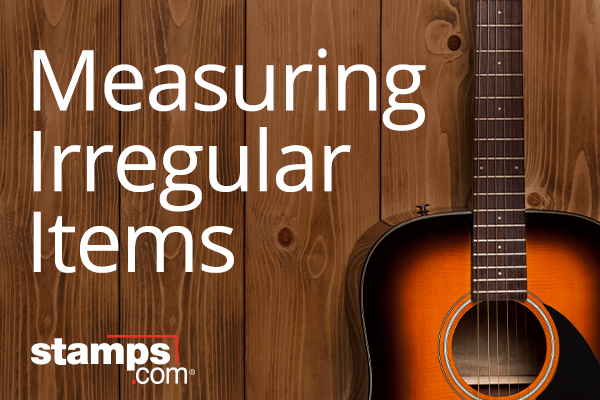
You’ve probably already realized that not every mailpiece is going to be a perfect cube or rectangle. Sometimes an item you need to send is going to have an irregular shape: a fishing pole, a tire, a hatbox. How do you measure irregularly shaped items so that you remain compliant with USPS regulations and add the correct amount of postage to every shipment? We can help!
You’ll probably run across the term of measurement known as girth. Critically, the total size of the package is the length plus the girth. Calculating the length and width of a package seems straightforward enough, but what about calculating its girth?
Girth
Girth is the distance around the thickest part of a parcel. For example, if you’re mailing a guitar case, this would be the measurement around the part of the box that contains the body of the guitar. Depending on the shape of your package, this will be calculated differently. Check out these illustrative examples here: http://pe.usps.com/text/dmm100/tips-measure-packages.htm
When calculating the girth of a square or rectangular package, use this method:
Girth = (2 x Height) + (2 x Width)
To calculate the girth of a triangular package, use this method:
Girth = Sum of the 3 sides of the triangular package
For tubes, the girth is the circumference of the tube (π x diameter). In this case, pi or “π” is 3.14. The diameter is the “circle,” the distance across the flat, circular side of the tube. Yikes! You didn’t think you’d have to worry about circumferences and diameters ever since you took geometry in high school. Not to worry—you can also measure a tube’s girth with measuring tape.
Length, Width and Height
Length is the longest side of the parcel–if you have a fishing pole to send, this would be the length of the rod.
Width is the second longest side of the parcel—if you’re sending a shoe box, the side of the box that faces the heel seat or heel base.
Height is the “standing” side of the parcel—if you’re measuring a tire, lay it flat on the ground. You can use a ruler to measure the tire’s height from the ground.
Check out this USPS resource regarding Physical Standards for Commercial Parcels: http://pe.usps.gov/cpim/ftp/manuals/qsg300/Q201e.pdf
Total Size Limits
When using the Stamps.com software, you may spot some size limit warnings in the mail class descriptions. A mailing rule to live by: every USPS mail class will have different limits in terms of total size. For international mail, the limitations regarding total size will vary by country and by class. Before printing your postage, we recommend verifying the limits for your country of destination here: http://pe.usps.com/text/imm/ab_001.htm
You may also want to keep in mind certain USPS surcharges (dimensional weight, balloon and oversized package surcharges) may apply to your package. Check out our helpful support article on this topic here: https://stamps.custhelp.com/app/answers/detail/a_id/169/kw/Girth/session/L3RpbWUvMTQ5MDYyODk5NC9zaWQvX3V4eE9CZW4%3D


